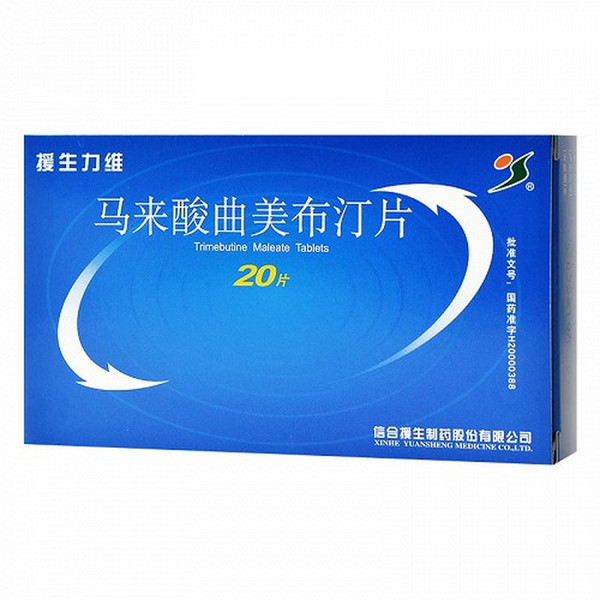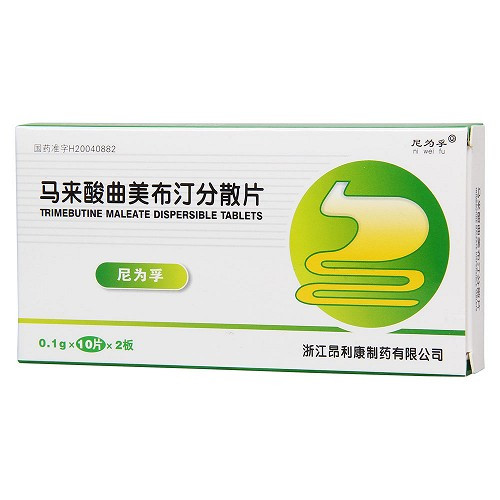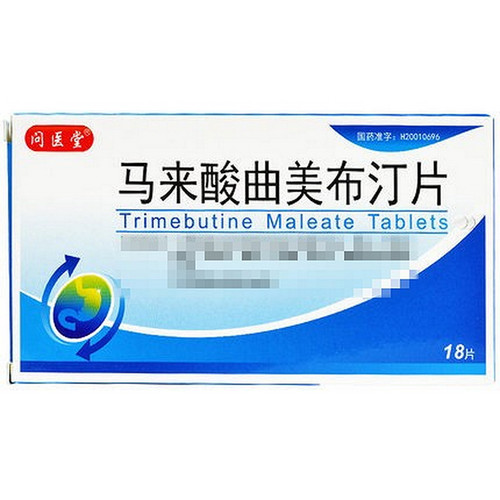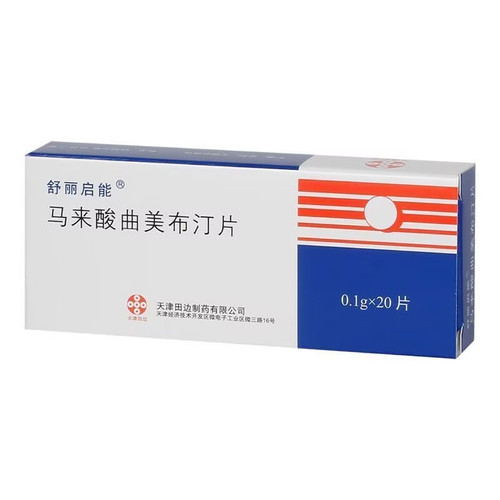Product Overview
[Drug Name]
Trade Name: Yuanshengliwei
English Name: Trimebutine Maleate Tablets
Chinese Pinyin: Malaisuan Qumeibuting Pian
[Ingredients]
The main ingredient of this product is trimebutine maleate.
[Properties]
This product is a white tablet, odorless, and bitter.
[Indications]
It is used to relieve symptoms such as loss of appetite, nausea, vomiting, belching, abdominal distension, abdominal pain, diarrhea, and constipation caused by gastrointestinal disorders. It can also be used for irritable bowel syndrome.
[Dosage and Administration]
Adults: Oral: 0.1-0.2g three times a day. The dose may be increased or decreased based on age and symptoms, or as directed by a physician.
[Adverse Reactions]
Occasionally, there may be symptoms of thirst, oral numbness, abdominal borborygmi, abdominal distension, constipation, tachycardia, drowsiness, dizziness, headache, rash, and elevated aspartate aminotransferase and alanine aminotransferase levels, with an incidence of approximately 0.4%.
[Contraindications]
Contraindicated in patients allergic to trimebutine maleate.
[Precautions]
Patients who develop a rash should discontinue medication and undergo observation.
[Use in Special Populations]
Precautions for Children: Safety issues have not been established; use with caution if necessary.
Precautions for Pregnancy and Lactation: Safety issues have not been established; use with caution if necessary.
Precautions for Elderly: Elderly individuals have weaker physiological functions; exercise caution when using this medication.
[Drug Interactions]
Not yet established.
[Pharmacological Actions]
1. Bidirectional Regulation of Gastrointestinal Smooth Muscle: This drug non-competitively inhibits the contraction induced by acetylcholine. Intravenous administration of 1 mg/kg of this drug has been shown to regulate the movement of hypermotility muscles in the stomach, regularizing irregular gastric movements. Intrajejunal administration of 4-6 mg/kg has been shown to induce physiological gastrointestinal propulsive motility in adults. In patients with neostigmine-induced hypermotility, 50 mg intravenously can inhibit motility in the ileum, ascending colon, and sigmoid colon to pre-load levels. 2. Gastrointestinal analgesic effect: This product can also activate peripheral K opioid receptors, releasing gastrointestinal peptides such as motilin, vasoactive intestinal peptide, and gastrin, thereby inhibiting visceral nerve reflexes, blocking gastrointestinal afferent nerves, reducing the effects of peripheral noxious stimuli on the central nervous system, raising the visceral pain threshold under pathophysiological conditions, and alleviating abdominal pain symptoms. 3. Peripheral antiemetic effect: Animal studies have shown that this product has a weak inhibitory effect on apomorphine-induced vomiting. However, for vomiting induced by copper sulfate, intravenous injection of 3 mg/kg or oral administration of 60 mg/kg can significantly prolong the time required to induce vomiting.
[Storage]
Store at room temperature.
[Specification]
0.1g
[Packaging]
0.1g x 20s/box
[Expiration Date]
24 months
[Approval Number]
National Medicine Standard H20083488
[Manufacturer]
Xinhe Yuansheng Pharmaceutical Co., Ltd.









